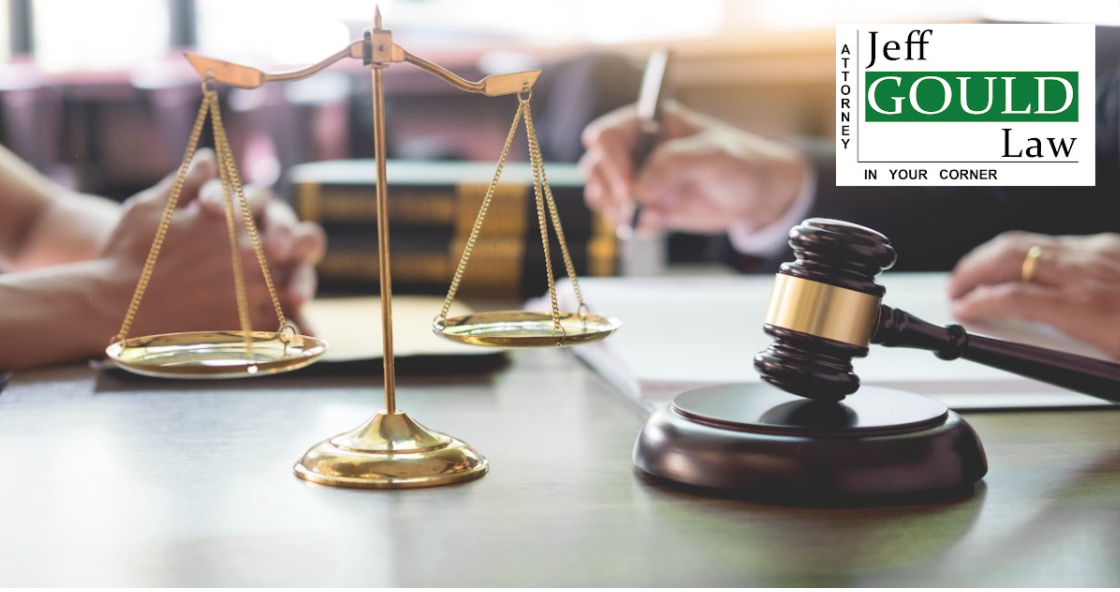Injuries are common, and unfortunately, many injuries are often caused by another party’s careless or negligent actions. When this happens, the injured individual may seek compensation for their losses through an insurance settlement and/or personal injury claim. However, for compensation to be rewarded, the at-fault party must be determined and decided. At Jeff GOULD Law, we know it is essential to properly understand how fault is determined in Arizona personal injury claims, and how this can specifically affect your claim.
Elements of Negligence
Proving negligence in a personal injury claim can be complicated. To successfully demonstrate negligence, a plaintiff or their attorney must prove four elements:
- Duty: To prove negligence in a personal injury claim, the plaintiff must establish that the defendant owed them a duty of care. The duty of care will vary situationally but can include anything from a driver owing a duty to other drivers on the road to operate their vehicle safely: maintaining a proper lookout; adhering to AZ Motor Vehicle Division and Statutory driving rules (stopping at stop sign or red Light; yielding right of way; driving in own lane; observing posted signage; speed; signaling; illegal u-turns, etc.;
- Breach: Once a duty of care has been confirmed, it needs to be established that the defendant breached this duty by failing to exercise caution or reasonable care to the injured party-plaintiff. For example, an intoxicated driver breaches their duty of care by operating a vehicle while under the influence;
- Causation: There needs to be evidence that this breach of duty of care directly caused the injury to the plaintiff; and,
- Damages: It needs to be established that the plaintiff sustained some type of loss (damages) for a personal injury claim to be valid. This can include medical bills, lost wages, or pain and suffering.
Comparative negligence
Most of Arizona’s personal injury cases depend on establishing who the negligent party was. In other words, the individual determined to be responsible for causing the injuries will generally be the one responsible for paying for the damages.
However, it is often the case that more than one party was negligent in an accident. Arizona follows what is called the doctrine of comparative negligence. It basically looks at the potential fault of each party. Under Arizona’s comparative negligence laws, the jury allocates fault, usually as a percentage. For example, a jury may find that the plaintiff was 20% responsible and the defendant was 80% responsible for the accident. Arizona allows injured parties to seek compensation even if they are up to 99% responsible for the accident.
In cases like this, the compensation will be reduced based on the amount to which they were determined to be at fault. For example, if a victim is awarded $100,000 in damages but was 20% at fault, they would only receive $80,000 in compensation.
Who can be at fault?
As long as fault can be proved and the elements of negligence are established, there are few exceptions to who can be determined as at fault. If you are injured in a car accident, the other driver may be at fault, but if poor lighting, road debris, lack of proper signage or any number of factors was the cause of your accident, then fault may not be as easily determined. Construction companies or even government entities can be at fault for your accident, depending on the circumstances surrounding the accident itself. This being said, filing a claim against a government entity requires you to file a notice of claim with the entity within six months.
Establishing and proving fault
Sometimes liability in an accident is clear, and the only aspect of the case that needs to be decided is the amount of damages. Other times, liability is unclear, and a case for who is at fault must be made. An experienced lawyer can help you develop and compile the evidence necessary to establish fault in these cases and advocate for a liability assessment of fault against the adverse party and in your favor.
Evidence may include: police reports; videos; photographic evidence; at-scene witness statements; medical records; traffic citations; and/or any type of evidence with physical proof that helps document the events of the incident. Documentation and evidence is critical and important to determine whose act/omissions and which party’s negligence led to the injuries in question. Once you and your attorney have compiled your evidence and brought forth a claim, a judge and jury are ultimately responsible for determining who is at fault and to what degree.
If you have been injured, Jeff GOULD Law, the Attorney in YOUR Corner, will help you seek maximum compensation for damages. No personal injury case is too big or too small. We are here to offer counsel and advice and to take away the hassle and confusion of navigating the legal realm so that you can focus on healing.
DISCLAIMER: The information on this blog/site is NOT, nor is it intended to be, legal advice. It is for general informational use only. You should consult an attorney for advice regarding your individual situation. Further, this information does not create an attorney-client relationship.


